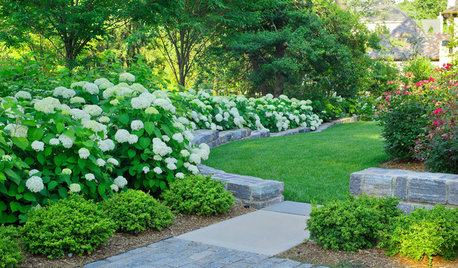plastic mulch rings on individual plants?
aeleva
10 years ago
Related Stories

GARDENING GUIDESHow to Pick a Mulch — and Why Your Soil Wants It
There's more to topdressing than shredded wood. Learn about mulch types, costs and design considerations here
Full Story
GARDENING GUIDESGreat Design Plant: Silphium Perfoliatum Pleases Wildlife
Cup plant provides structure, cover, food and water to help attract and sustain wildlife in the eastern North American garden
Full Story
FARM YOUR YARDHow to Build a Raised Bed for Your Veggies and Plants
Whether you’re farming your parking strip or beautifying your backyard, a planting box you make yourself can come in mighty handy
Full Story
GARDENING GUIDESHow to Find the Right Native Plants for Your Yard
Find plant maps, sale sites and guides that make going native in the garden easier than ever
Full Story
GARDENING GUIDESLet's Weed Out 4 Native Plant Myths
Plant wisely for a garden that supports pollinators and requires less work
Full Story
LANDSCAPE DESIGNNative Plants Help You Find Your Garden Style
Imagine the garden of your dreams designed with plants indigenous to your region
Full Story
GARDENING GUIDESGot Frost-Damaged Plants? How It Happens, and When and How to Prune
Crispy brown leaves are a sure sign that Jack Frost has been to your neighborhood
Full Story
GARDENING GUIDESGarden Myths to Debunk as You Dig This Fall and Rest Over Winter
Termites hate wood mulch, don’t amend soil for trees, avoid gravel in planters — and more nuggets of garden wisdom
Full Story
FLOWERS AND PLANTSHydrangea Arborescens Illuminates Garden Borders and Paths
This long-blooming eastern North American native shrub finds a home in landscapes around the world
Full Story
PETS6 Ways to Help Your Dog and Landscape Play Nicely Together
Keep your prized plantings intact and your dog happy too, with this wisdom from an expert gardener and dog guardian
Full StorySponsored
Columbus Area's Luxury Design Build Firm | 17x Best of Houzz Winner!
More Discussions



Ohiofem 6a/5b Southwest Ohio
woohooman San Diego CA zone 10a
Related Professionals
Belmont Landscape Architects & Landscape Designers · Fitchburg Landscape Architects & Landscape Designers · Lyons Landscape Architects & Landscape Designers · Mountain Brook Landscape Architects & Landscape Designers · Maple Valley Landscape Contractors · Inglewood Landscape Contractors · Middle River Landscape Contractors · Nashua Landscape Contractors · Norristown Landscape Contractors · Smyrna Landscape Contractors · White Bear Lake Landscape Contractors · Raytown Landscape Contractors · Fairfax Driveway Installation & Maintenance · Hockessin Driveway Installation & Maintenance · Randolph Driveway Installation & Maintenancetishtoshnm Zone 6/NM
seysonn
aelevaOriginal Author
Charlie